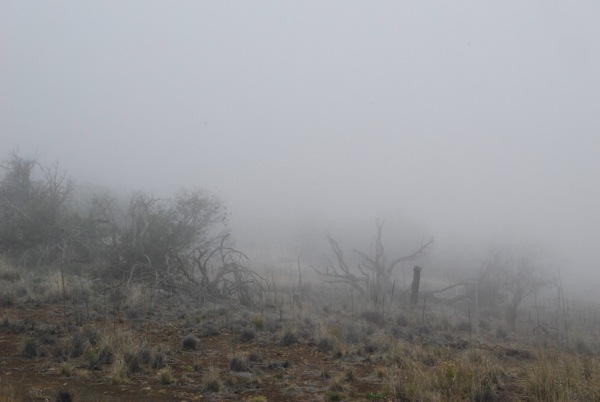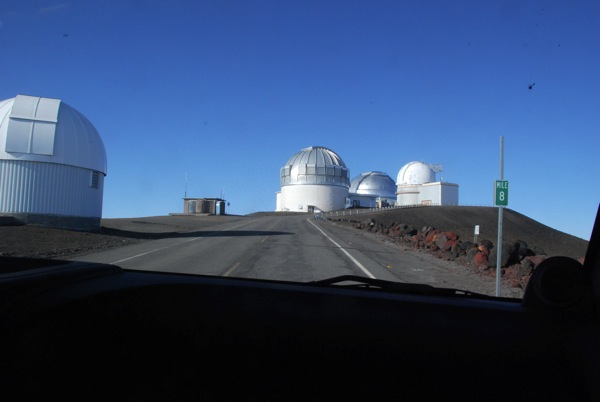Editor’s Note: This fish documents a drive up Mauna Kea. It contains nothing profound. The pictures might or might not hold some interest, but by and large the words are not for general consumption but rather are part of the author’s conceit that years from now it might be particularly nice to read back and reflect upon that which might otherwise have been lost to old age oblivion which even now approaches. Feel free to skip as always but here in particular.
1. Can We Go Up?
There was a road that continued beyond the parking lot of the visitors’ center.
“Can we drive up?” I asked the woman at the counter.
“I’ll let you take this one,” she said to a rugged, ranger-looking man beside her and walked away.
“Well you see,” he said in a consoling tone as he took her place, “the road is very steep, and it is not paved. You need four wheel drive. “
“We have a Jeep,” I said, glancing over at Trudy.
“Oh that’s different.”
He paused and then offered some advise. He said to use 4L and to use low gear coming back down so that our brakes didn’t overheat. And he cautioned us about the cold. And about snow blindness. And about altitude sickness. And then he added that we should stay there, at the visitors’ center, for at least 30 minutes to acclimate to the altitude.
2. Deciding
You see as we were driving thru the clouds and fog on Saddle Road, we had turned left on a whim when we saw a sign for the Onizuka Mauna Kea Observatory Visitor Information Station. And the center was at 9000 feet, already high enough to be above the thickest of the cloud cover and fog.
Our original plan had been to drive Saddle Road between Mauna Kea and Mauna Loa. We would cross the island rather than driving around it. This was to be a scenic short cut but nothing more. We had not contemplated the summit of Mauna Kea, but then we hadn’t known it was an option.
So here we were, halfway … up in a Jeep. We’d probably never be here again, and if we decided to drive back down without going all the way up, we might regret it for the rest of our lives.
We decided to do it.
3. Up To The Summit
The Jeep crept along at 15 miles per hour, the gears whining in that reassuring four wheel drive way. It reminded me of Bunka’s Willy’s Jeep pickup truck crawling thru the woods and blowsand of Michigan years and years ago.
But there were no woods here. There was only the gravel road and barren brown dirt and rock slopes punctuated by struggling grass and scraggly trees hiding in the mist.

In places, cliffs fell precipitously away from the right shoulder. And as we crept up the steeply sloped road, the clouds began to break, and patches of blue began to show.

Then, in a place where the grass and shrubs and struggling trees gave way to nothing but rock and sporadic mounds of some kind of ground-hugging scrub, we topped the clouds.
The sky was blue. The slope was steep. Rocky, unstable-looking heaps of mountainside shot up from the left shoulder of the road and a vast void of nothingness dropped off to the right. Orange cinder cones popped up out of nowhere as we rounded sharp switchbacks.

The cloud deck blanketed the island below us. The windows were cold to the touch. The gravel crunching under our tires seemed to be kept in place only by a few boulders.

4. Reaching The Summit
And then the observatories appeared — sleek, silver cylinders and round, white domes with blue sky and scattered cirrus clouds above them and with barren landscape all around. An outpost of civilization in the midst of desolation.

Nearly 14,000 feet. We made it.
